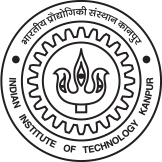
Prerequisites:
3-0-0-9
Course Contents
Introduction: need and basic goals for computer security, security threats etc. Cryptographic building blocks: Symmetric and asymmetric key cryptography, cryptographic hash functions, digital signature schemes etc., with representative applications for each. Operating System Security: Low level protection mechanisms, access control: models for access control, some confidentiality, integrity, and hybrid models of access control such as Bell La Padula, Biba, Chinese Wall etc., discretionary v/s mandatory access control. Case studies: Java access control policy specifications, SE Linux security model and implementation. Program flaws: Bugs which have security implications such as buffer overflows, race conditions etc. Malicious code: Viruses, worms, Trojan horses; how they work and how to defend against them. Network Security: problems in network security; kinds of attacks, PKI, key exchange protocols, example protocols such as PGP, Kerberos, IPSEC/VPN,SSL, S/MIME etc. Protocol vulnerabilities: examples of protocol vulnerabilities such as in TCP/IP, denial of service attacks etc. Tools for network security such as firewalls and intrusion detection systems.
Topics
Current Course Information
Instructor(s):
Number of sections:
Tutors for each section:
Schedule for Lectures:
Schedule for Tutorial:
Schedule for Labs:



